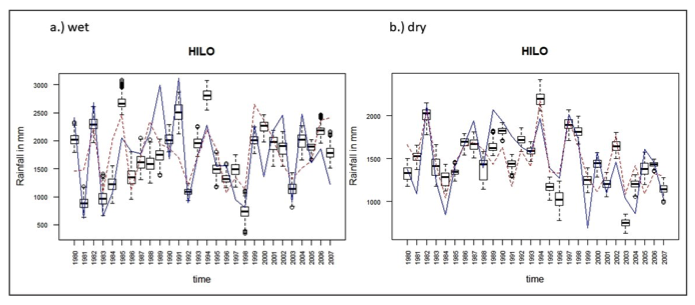
SPONSOR:
National Oceanic and Atmospheric Administration RISA Program
PROJECT PERIOD:
09/01/15 – 08/31/20
PROJECT PIs:
Victoria Keener (EWC), Hariharasubramanian Annamalai (IPRC, UHM), Maxine Burkett (Law School, UHM), Aly El-Kadi (WRRC), Melissa Finucane (EWC), Thomas Giambelluca (WRRC), Nancy Davis Lewis (EWC), John Marra (NOAA), and Kirsten Oleson (NREM, UHM)
ABSTRACT:
Pacific Islanders have taken significant actions in recent years to increase community and environmental resilience, collaboration, and adaptation to climate impacts. However, decision makers throughout the region still need tailored information to plan effectively for climate variability and change. While several climate projections at island-appropriate scales have been released in Hawai‘i, many stakeholders struggle with how to use the data and evaluate the associated uncertainties. Local and regional governments need to prepare for long-term impacts in the short- and middle-term, and want to choose adaptation options based on technical and socio-economic considerations. This project addresses the overarching question: How can we support the effective utilization of climate science to manage the impacts of the changing climate across diverse sectors in the Pacific Islands region? This project will (1) assist natural resource managers and decision makers in the use of climate data, (2) expand island-scale downscaled climate projections, (3) examine metrics of economic value to climate impact adaptation measures and natural resources, (4) use watershed models to quantify climate impacts on groundwater, (5) identify entry points for adaptive climate policy, (6) quantify thresholds of decisions made via hydroclimatic variables, and 7) pioneer robust climate communications research in the Pacific Islands.
URL to project page:
https://www.pacificrisa.org/
PRINCIPAL INVESTIGATOR
